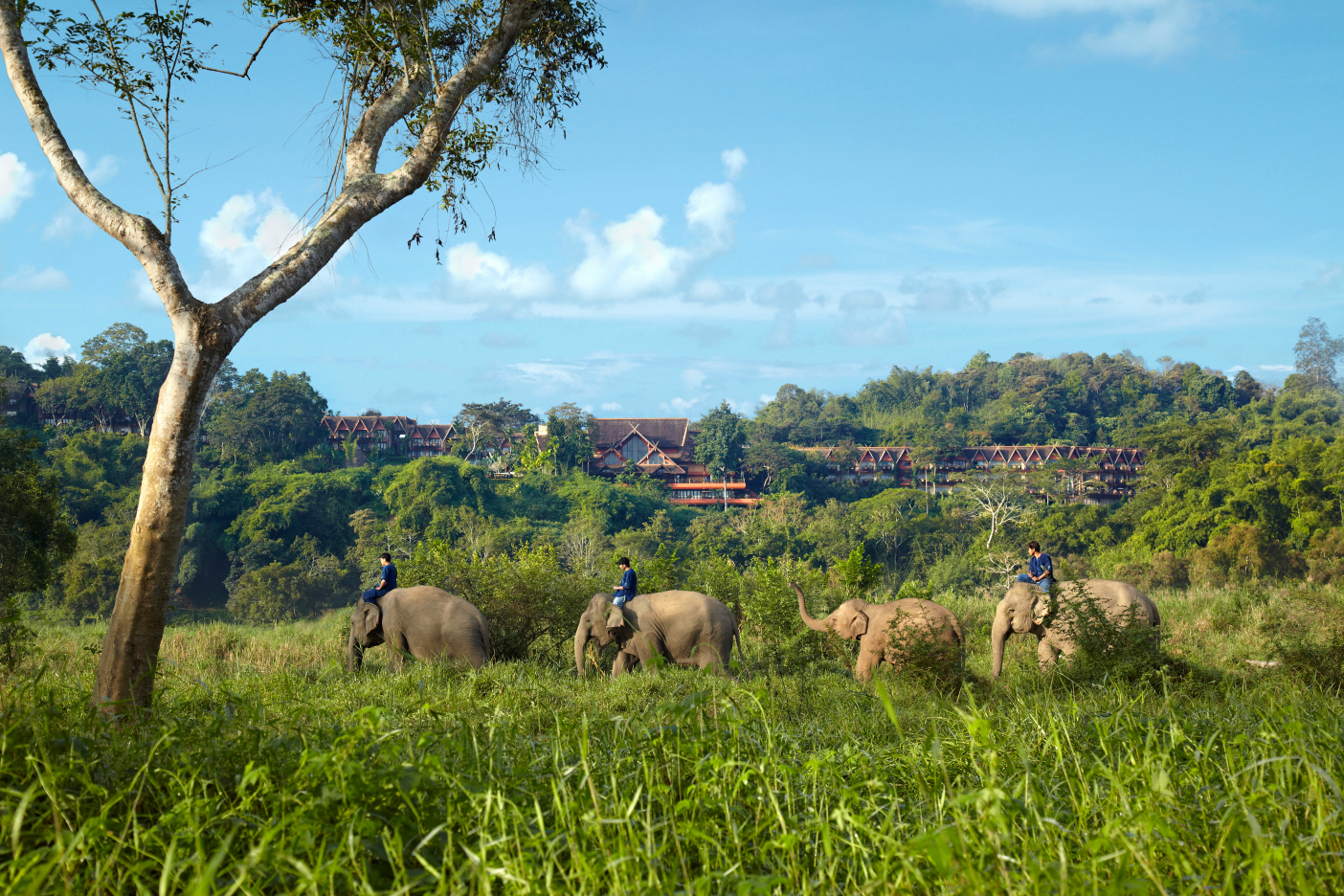
Once synonymous with the opium trade, Thailand’s northernmost province is slowly emerging as a luxury cultural destination, as Belinda Luksic discovers.
Once synonymous with the opium trade, Northern Thailand provinces are slowly emerging as a luxury cultural destination, as Belinda Luksic explores.
From the balcony of my Deluxe Three Country View Room at Chiang Rai’s luxury boutique Anantara Golden Triangle Elephant Camp & Resort, the spectacular confluence of Myanmar, Laos and Thailand is shrouded in diaphanous beauty. It’s dreamy, as if someone has smeared Vaseline on a camera lens. Sky disappears into ether and the misty landscape of dense greenery, busy Mekong River and gorgeous cornflower-blue mountain range appears in soft focus.
While everyone is off getting massages in the hotel spa, I wait for nightfall to engulf everything in pitch darkness. It is then I am rewarded with a chorus of jungle song: fluttering wings and trees rustling, birds screeching and the insistent bellow of elephants far below. It’s magical and exciting, and leaves me feeling worlds away from any civilisation.
A short 80-minute flight from the heat and bustle of Bangkok, Chiang Rai province sits at the remote, northernmost tip of Thailand. Once the opium capital of the world, today it is a languid, peaceful and predominantly rural area. Rice paddies and large tracts of farming land, milky green rivers, thatched huts and bright orange and yellow temples pepper a positively halcyon landscape framed by hazy, hulking mountain masses.
It’s up in these hills, overlooking Doi Tung mountain, we come upon the ornamental Mae Fah Luang Garden. This 10-acre temperate garden and arboretum, once an opium plantation and important stop on the illicit drug trail, was revitalised in the early 1990s as part of the Doi Tung Development Project. The project was set up by Thailand’s late Princess Mother (the current King’s mum) to quash the opium trade.
It’s pretty. Shady paths of overhanging shrubs, palms and towering pines lead to ornate gardens bursting with florescent hyacinth, dahlia, orchids and roses. Within a maze, I reach a dead end only to find a sweet garden of heart-shaped flowerbeds carpeted in pink blooms. There’s a local art installation too; a hillside village of thatched bamboo huts framing a pond. A treetop walk is scheduled to open next year.
“This mountain area is all sustainable agriculture,” says Mim, our guide, with a flourish of her hand; orchids and crops of coffee, macadamia nuts and various fruit having replaced the opium. In Mae Fah Luang Garden alone, more than 400 local villagers are employed.
Café DoiTung, a fair-trade venture within the gardens with lollipop parasols, outdoor seating and excellent barista-quality coffee, uses locally grown sustainable coffee beans that are available for sale, along with sustainably grown macadamia nuts and cookies. This is not to compete with the world’s most unique and expensive coffee, the appropriately named, Black Ivory, which we sample at our resort as part of an aromatic tableside serving experience. That coffee is made from Thai Arabica beans ‘naturally refined’ of bitterness after being digested by the elephants at the Elephant Camp.
“This mountain area is all sustainable agriculture,” says Mim, our guide.
Back in the city, we discover Art Bridge and Chiang Rai’s burgeoning art scene. The work of a local artist collective, this wonderfully modern pavilion set in a funky sculpture garden on the outskirts of town, has two fantastic contemporary galleries and an artist studio. The terrace restaurant and café overlooking the water and lush rice paddies is pretty lovely too.
We visit Wat Rong Khun (White Temple), a stupendously flashy, bright white temple sparkling with inlaid mirrors and glass, the work of Thailand’s neo-traditional master, Chalermchai Kositpipat that is said to represent a glimpse of heaven. “More like hell,” I joke, as a loudspeaker crackles into action for the umpteenth time and yet another busload of tourists arrives.
Yin to this yang, and somewhat quieter, is artist Tawan Duchanee’s Baan Dam (Black House), a neoclassical masterpiece of bleached bones, animal skins and twisted animalistic sculptures.
On our final day, we stop for lunch at Chivit Thamma Da, a gorgeous colonial-style café and day spa on the banks of the Kok River. It’s divine. A meal of sustainable and mostly organic salads and curries arrives, along with goblets of icy cold mint and coconut water. For those after something a little stronger, there is a good wine and spirits list and, surprisingly, Cuban cigars.
Of course, if harrowing tales of the 5,000-year history of opium and its illegal trade in the Golden Triangle is your thing, the exceptional Hall of Opium Museum, a 10-minute stroll from our hotel, is well worth a visit. Room after room of brilliantly conceived, sophisticated multi-media, interactive video and dramatic display tell a cautionary tale of drugs and remind us that, until the late 1990s, this was Chiang Rai.
Like a Phoenix, though, this sleepy province has risen from its dark and dangerous past and is slowly redefining itself as a luxury destination. It’s not entirely there yet, but that’s very much a part of its charm.
Latest Articles
Don't miss the latest from Luxury Travel
